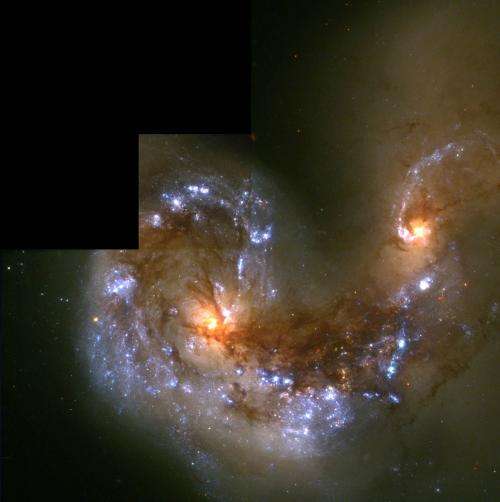Black holes and star formation

(PhysOrg.com) -- It has long been recognized that galaxy mergers or even close interactions can play a vital role in shaping the morphology of galaxies. One way they can do so, it is thought, is by triggering bursts of star formation. But exactly how a collision produces new stars is not clear: sometimes star formation activity is seen all across an interacting galaxy, but in other cases it is localized to a region around the galactic nucleus.
Galaxy mergers and close interactions are also thought to drive the growth of central supermassive black holes and their high-energy activity. The collision prompts material to fall into the massive central region, stimulating the black hole to become what is called an active galactic nucleus (AGN). Sorting out these two effects of a merger is a key issue in modern astronomy, and is associated with determining if and how star burst activity is connected to the growth of the central black hole.
CfA astronomers Xin Liu and Yue Shen, together with a colleague, studied a set of 1286 pairs of AGN, presumably interacting with one another, that were observed optically in a large, systematic survey of galaxies.
They used the strength of ionized oxygen and hydrogen emission lines to quantify the black hole and/or star formation activity in these sources, and then compared the results to strengths seen in single AGN that are not interacting. Writing in one paper of a series on this subject, they report that tidal interactions enhance both black hole accretion and star formation, especially in closer pairs.
They also find that visible tidal features can be a misleading measure of an interaction - some AGN pairs may be interacting yet show no tidal features, perhaps because of the galaxy composition or details of the collision.
Provided by Harvard-Smithsonian Center for Astrophysics




















